Key takeaways:
- Effective hose management is crucial for safe and efficient firefighting operations, directly impacting response times and team morale.
- Proper techniques, such as flaking hose and effective communication, are essential for seamless deployment and teamwork during emergencies.
- Pre-planning and practicing various deployment scenarios prepare teams for diverse challenges, enhancing flexibility and efficiency under pressure.
- Building a strong team bond through clear communication and mutual support significantly improves performance, especially in chaotic situations.
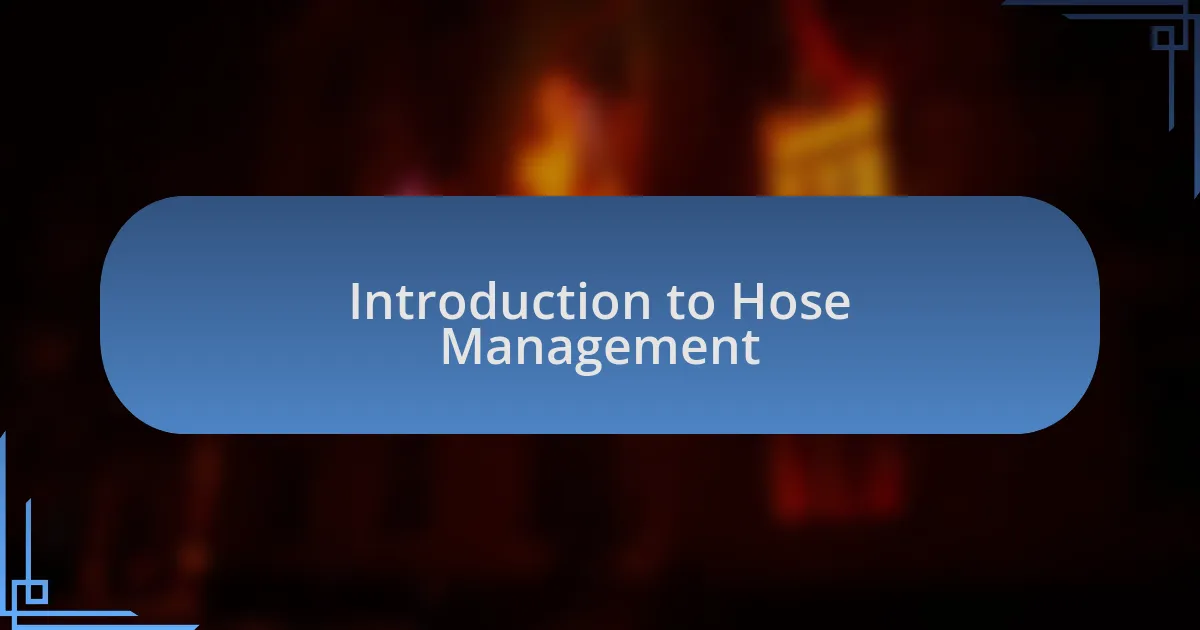
Introduction to Hose Management
When we think about effective hose management, it’s easy to overlook its importance until the heat of the moment arrives. I remember my first live drill; the adrenaline was pumping, and the last thing on my mind was ensuring my hose was ready to go. But I quickly learned that the success of the operation hinges on how well we manage our hoses.
The way we handle hoses can make or break a firefighting effort. Have you ever found yourself tangled in a hose while trying to maneuver through smoke? It’s a frustrating experience that can slow down response times and divert crucial attention away from the task at hand. A well-organized hose lays the groundwork for a smooth and efficient operation, allowing us to navigate quickly and focus on what truly matters – saving lives.
Effective hose management is about more than just practicality; it’s about safety and teamwork. During one of my training sessions, I witnessed the power of good communication among team members as they helped each other set up a hose line. That unity not only made our task easier but also instilled a deep sense of trust within the team. It’s moments like these that remind me why we emphasize hose management in firefighter training: it’s foundational to our success and safety on the front lines.
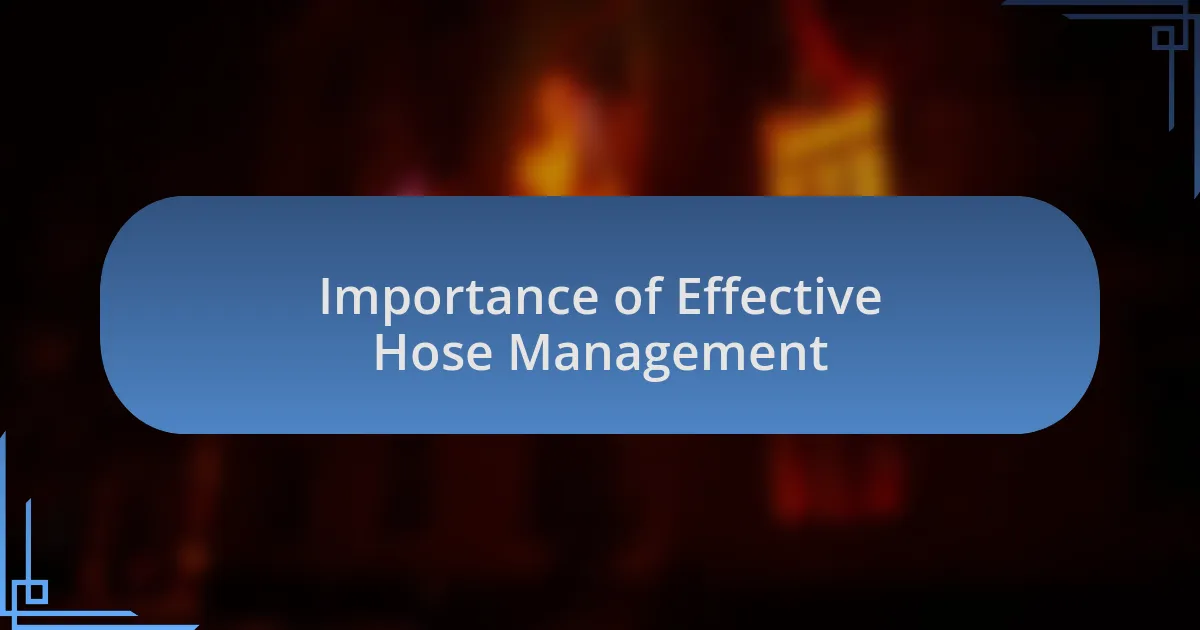
Importance of Effective Hose Management
Effective hose management can significantly impact the outcome of firefighting operations. I remember a time when our response time was drastically improved simply because we had prepped our hoses properly. What a relief it was to quickly deploy the hose without fumbling—each second counts in those critical moments!
When hoses are managed well, they not only enhance efficiency but also boost the morale of the entire team. Once, during a particularly chaotic drill, I noticed how a well-organized staging area reduced stress levels. It made all the difference in our coordination and communication, allowing us to act almost instinctively. Can you imagine tackling a fire without the added pressure of a tangled mess?
Moreover, effective hose management cultivates a culture of accountability among firefighters. I’ve learned that when each team member knows their role in managing the hoses, it fosters an environment of trust and respect. It’s empowering to look around and see everyone at ease, confident in their responsibilities, and working toward a common goal—protecting lives and property.
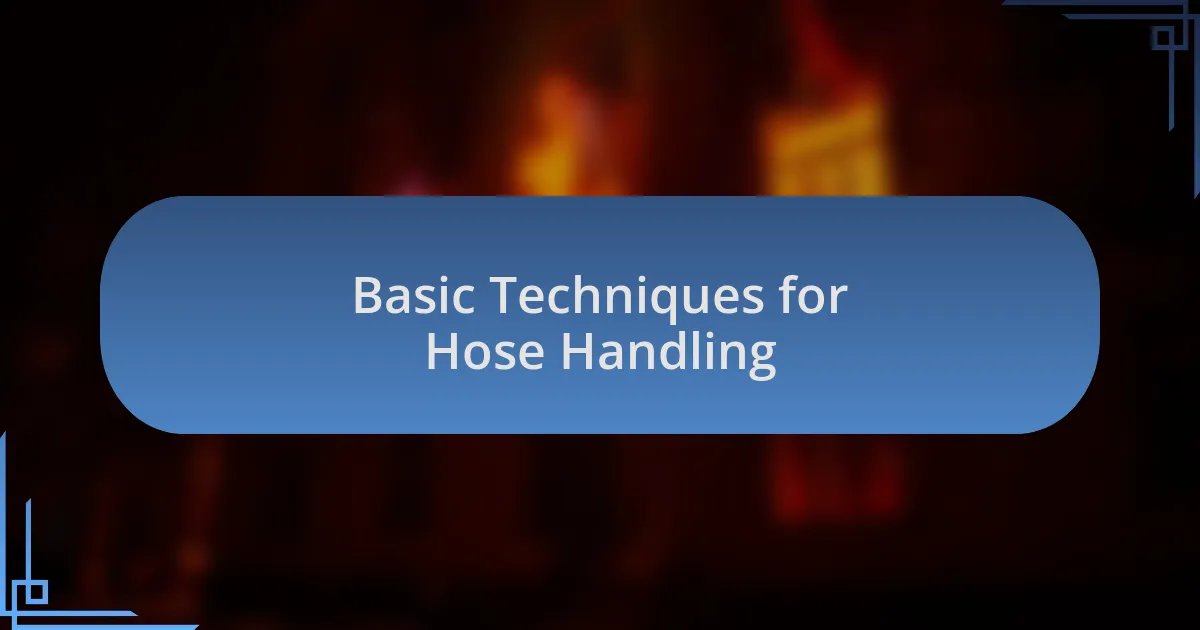
Basic Techniques for Hose Handling
Proper technique is essential when handling hoses. One of the most basic yet critical techniques I’ve learned is how to properly flake the hose when unrolling it. I vividly recall a training session where we practiced this; the process not only helped prevent kinks but ensured a seamless deployment during a simulated rescue. After that hands-on experience, I understood just how vital that technique was—every smooth motion adds seconds to our response times.
Another technique that stands out is proper insertion into couplings. I remember the frustration of trying to connect hoses in a high-pressure situation where every moment felt wasted. It was a training lesson I will not forget: steady hands, aligned threads, and a firm twist can make all the difference. To this day, I still find myself double-checking connections out of habit, a small step that prevents costly mistakes and bolsters my confidence during chaotic moments.
Additionally, effective hose handling requires team communication. During competitions, I’ve often witnessed how verbal cues keep everyone synchronized. It’s fascinating to see how a simple shout of, “Hose left!” or “Charge!” can turn chaos into a well-oiled machine. It brings a sense of camaraderie that elevates our team performance; after all, we’re all in this together, and clear communication ensures that no one is left scrambling when it matters most.
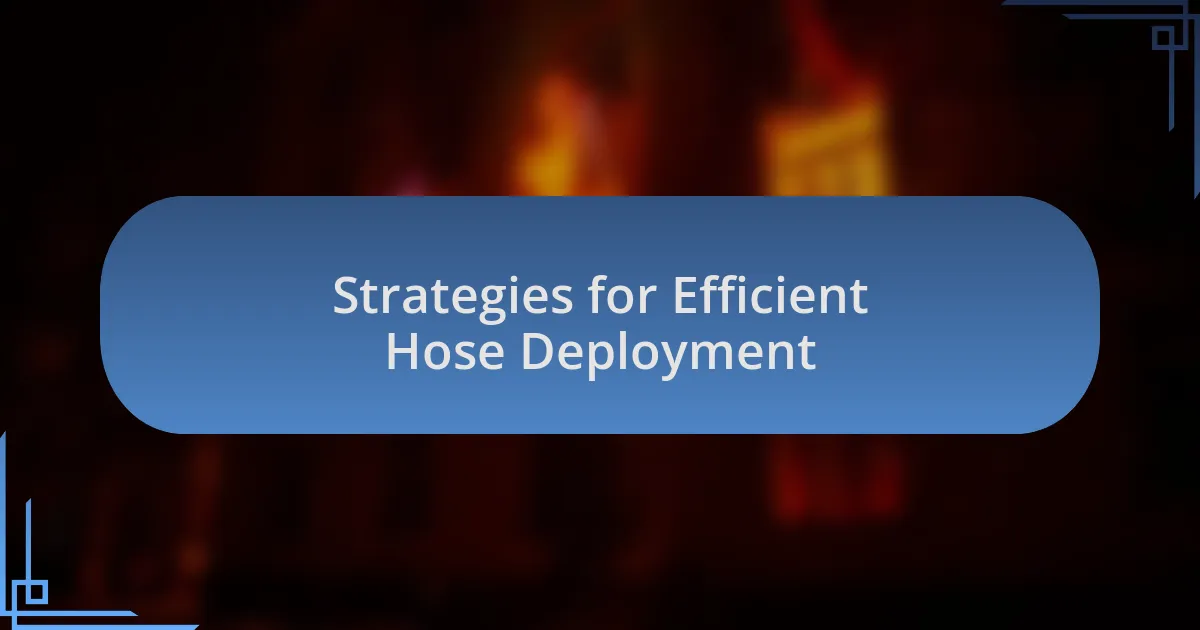
Strategies for Efficient Hose Deployment
When it comes to efficient hose deployment, pre-planning is everything. I remember a time during a live drill when my crew and I laid out our deployment strategy before entering a simulated structure fire. This foresight not only improved our speed but also gave us a sense of direction amidst the heat of the moment. Did we have all facets covered? Absolutely—knowing where each person needed to be allowed us to flow with purpose, rather than scramble in confusion.
Another strategy that I can’t stress enough is practicing various deployment scenarios. There’s a particular instance that comes to mind—during a training weekend, we experimented with different layouts for multiple types of fires. We learned quickly that different situations require distinct approaches, and adapting to each challenge sharpened our skills. Has anyone else found surprising successes in unexpected methods? I certainly did, realizing that flexibility in our deployment tactics often made all the difference when time was of the essence.
Lastly, utilizing hose packs effectively can drastically change the dynamics of hose deployment. I still vividly recall a frustrating drill where we fumbled with a tangled hose pack, wasting precious seconds. That experience ignited my determination to master packing techniques that ensure quick and efficient deployment every time. The sense of relief when everything flows smoothly is invaluable—it reinforces the fundamental truth that preparation is the key to success in high-pressure situations.
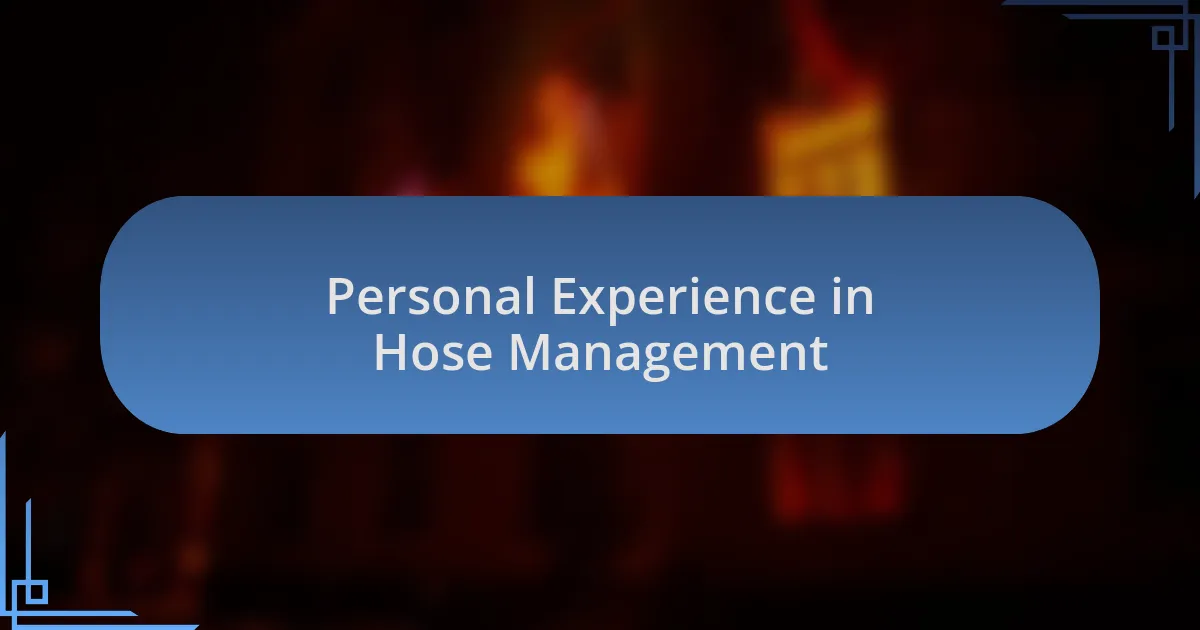
Personal Experience in Hose Management
During my early days as a firefighter, I encountered a situation that tested my understanding of hose management. We responded to a residential fire, and amidst the chaos, I found myself struggling to maintain control of the hose while advancing towards the flames. This experience taught me the critical importance of staying calm and connected with my team. The moment I shifted my focus from wrestling with the hose to forging clear communication with my crew, everything fell into place. Have you ever realized that sometimes, it’s the simplest adjustments that yield the most significant results?
I also remember a memorable night shift where we faced strong winds while battling a blaze. The wind whipped through the area, threatening to upend our strategy and scatter our hoses. It was in that moment I saw the power of teamwork and mutual support. We quickly adapted by securing hoses together, using each other’s strength as anchors. That incident reinforced my belief that effective hose management goes beyond just technique; it’s about creating a bond within the team that enhances our effectiveness.
One vivid memory stands out from my training days—it was during a race against the clock, with heavy smoke filling the air. As I deployed my hose, I instinctively remembered my training, allowing muscle memory to take over. I felt an adrenaline rush as I realized how far I had come, and how comfortable I had grown with the equipment. That moment sparked a deeper appreciation for ongoing practice; it reaffirmed that mastery doesn’t happen overnight but through repetition and commitment. Have you ever felt that rush of confidence when you nail a skill you’ve worked hard to perfect? It’s an incredible feeling that keeps me pushing to improve further.